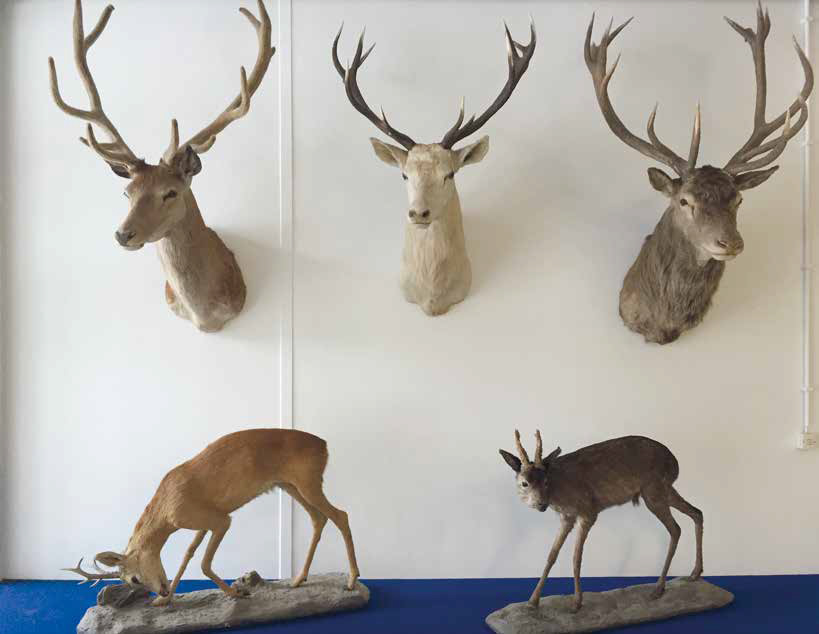
Adresse:
Büsgen-Institut der Universität Göttingen
Büsgenweg 3
37077 Göttingen
www.uni-goettingen.de/sammlung-wildtierwissenschaften
Ansprechperson:
Ines Mahlmann
Tel.: 0551 39-33628
ines.mahlmann@forst.uni-goettingen.de
Öffnungszeiten: keine öffentliche Ausstellung
Die Wildtierwissenschaften befassen sich mit den Wechselwirkungen zwischen Wildtieren und ihren Lebensräumen in unterschiedlichen Ökosystemen. Der Ursprung der Sammlung geht auf die wildbiologische Forschungs- und Lehrtätigkeit der im Jahr 1868 in Hannoversch Münden gegründeten Forstakademie zurück. Heute zeigt die Sammlung Exponate heimischer und exotischer Wildtiere, wobei der Schwerpunkt auf Geweihen und Hörnern von Säugetieren liegt. Die umfangreiche Sammlung von Geweihen des heimischen Rehwildes (Capreolus capreolus) demonstriert beispielsweise die Variabilität der Geweihausformung. Eine Vielzahl von sogenannten abnormen Gehörnen
erlaubt es, deren Entstehungsursachen am Objekt
zu erläutern.
Unter den Exponaten befinden sich
einige sehr seltene Stücke, unter anderem Geweihe von dem in freier Wildbahn ausgestorbenen Davidshirsch (Elaphurus davidianus) und dem um 1938 vollständig ausgestorbenen Schomburgk-Hirsch (Rucervus schomburgk). Auch Fell und Schädel eines der letzten in Niedersachsen legal erlegten Wölfe vom Anfang des 20. Jahr-hunderts gehören zur Sammlung. Weniger spektakulär, doch von großer Bedeutung für die Praxis, sind Exponate zur Erkennung von Wildtieren anhand der von ihnen zurückgelassenen Spuren, wie Fußabdrücke oder Kot. Zusätzlich zu den Wildtierpräparaten umfasst die Sammlung auch Zeugnisse der Jagdausübung in unterschiedlichen Epochen, darunter etliche Fallen und Jagdwaffen. Viele dieser Exponate stammen aus dem 1868 aufgelösten Königlich Hannoverschen Jägerhof.
Nico Balkenhol




